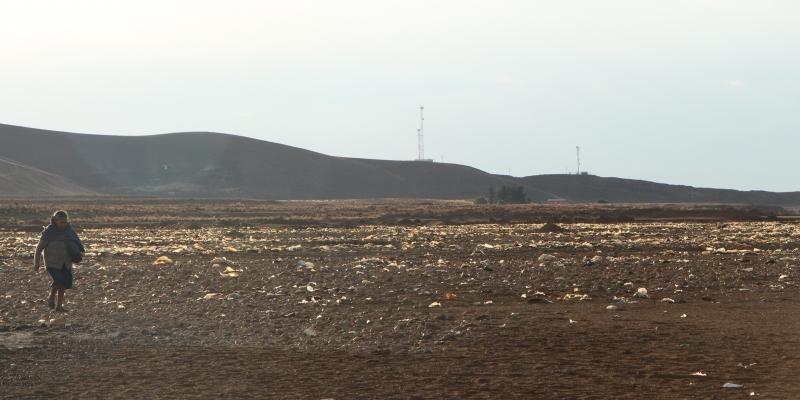In the small town of Poopó in western Bolivia, it’s nearly impossible to escape the damages that mining has left behind. Even small children have direct contact with mining waste through the contaminated water they often play in.
My visit there last December had a profound impact on me. Along with the thermal springs, the abandoned mines are one of the town’s main attractions.
As far as I could tell, the mining towns of the Oruro region share a common feature: the absence, or precariousness, of infrastructure and basic services like electricity, water and sewage. Apparently mining there has not been an antidote to poverty, as governments throughout the region often claim.

I visited Poopó and other towns in the area after a workshop on mining and environmental justice in Bolivia, an event in which I presented AIDA’s work to researchers, professors, students and members of rural communities dedicated to water quality monitoring and care.
The Environmental Justice Network of Bolivia organized the forum with AIDA and other organizations and institutions from across the nation. It was a valuable space to share ideas, gain a better understanding of the impacts mining has had on the country, and to develop a common agenda.
I was accompanied by members of the Andean Communication and Development Center (CENDA), whose work monitoring water quality in Bolivia can be held up as an example for organizations throughout the country and the region seeking to generate positive change. AIDA will collaborate with the Center this year to help make visible the realities of those living in cities and towns severely impacted by mining.
On our trip we saw the urgent need for concrete measures to alleviate existing damages and help prevent new ones. The damages we saw were caused by the various actors of the mining sector: businesses, cooperatives, and the so-called medium or single-person mining. And even those that occurred decades ago were continuing to cause serious harm to the health of the people there and the ecosystems they depend on.
In these high-altitude places—with little humidity and scarce vegetation—the implementation of government actions for the conservation and rational use of water sources is vital and urgent.

My visit to the towns of the Bolivia’s mining region left me with three main ideas:
Witnessing such a bleak scenario only inspires me to continue working for environmental protection from my position as a scientist. There is much hard work ahead.
For centuries, Bolivia has allowed its economy to depend almost exclusively on the extractive sector, an option that is entirely unsustainable in the medium and long term. Mining, by definition, is an unsustainable activity: mineral resources are not renewable, and the damages associated with their extraction can last for millennia and are expensive to remediate.
AIDA and our partner organizations work closely with communities in attempt to understand them, and to both receive and generate useful information on the true impacts of extractive activities.
Making significant societal changes towards a future more respectful of nature is not easy, but it is possible. The biggest challenge is demonstrating that the sustainable path can be fruitful and, ultimately, that it is a better option for nations like Bolivia.
Towns and cities in other Latin American nations—like Cajamarca, in Colombia—have prioritized their territory and their water over mining. I’m convinced that is a decision that can be achieved throughout the region.
Until it is, we will continue working with communities, sharing lessons learned, and proposing ways forward that truly benefit all.